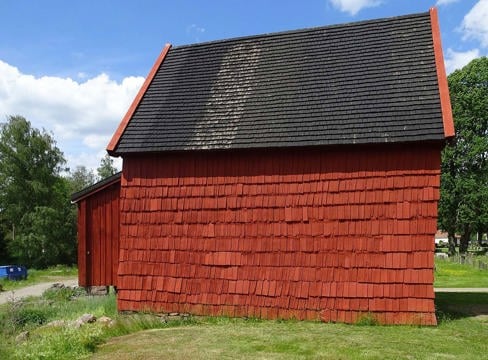Professor Koji Murata has long researched how biological materials could be used in space. For him, it was a natural choice to test wood's functions in the space environment, and under the leadership of Japanese astronaut Takao Doi, he has worked to develop the world's first wooden satellite. For him, a timber house or forest on the moon is not an unreasonable thought.
“Both tradition and colleagues in the field have inspired me. Among others, Dr Makoto Nagatomo, who introduced the idea of building log houses on the moon using trees grown on the lunar surface. But I also see the use of wood as a possible way to reduce human impact on the space environment,” he says.
Koji Murata and his team have worked for many years on the satellite, named LignoSat, and in December last year it launched into space. This marked a major step in exploring renewable construction materials in space contexts – something that could prove more important than previously thought.
Material choices' impact on Earth
In 2014, 241 satellites were launched into space. Just ten years later, the figure was 2,695. The development of commercial spaceflight is a driving factor in the increase in satellite launches, and the number is expected only to grow. When a satellite completes its mission, it often re-enters the atmosphere where it burns up. This might sound convenient, but the substances in the metals that satellites are often made from don't disappear. On the contrary, when the satellite burns, a large amount of metal particles are released. Many of these then remain in the stratosphere, where they have a harmful impact.
A 2023 study from the University of California shows that over ten per cent of aerosols – tiny suspended particles – in the stratosphere contain particles from spacecraft. The stratosphere is the atmospheric layer where the ozone layer is located, and metals from spacecraft risk acting as catalysts for chemical reactions that could affect ozone depletion and radiation balance. The long-term impact of metal particles on atmospheric chemistry is still unknown, but researchers are concerned they could damage the fragile ozone layer – particularly as the number of satellite launches increases.
According to Koji Murata, wooden satellites can offer similar functionality to satellites made of metal. But the advantage of using wood is that they could be a better alternative for the planet.
“We don't believe wood will completely replace metal, but it has its applications. For example, there are reports suggesting that organic materials offer superior protection against cosmic radiation. This could mean wood has similar potential. That was among the things we wanted to explore with Ligno-Sat,” says Koji Murata.
But wood's primary advantage as a construction material in satellites lies in its combustibility.
“It's a renewable material that can disappear after achieving its purpose. Wooden satellites like LignoSat will largely burn up in the atmosphere and turn into gas instead of releasing particles. This makes wood well suited for contributing to more sustainable space use.”
Earth tradition meets space
LignoSat is a small satellite measuring 10 x 10 x 10 centimetres. It holds one litre of liquid, like a standard milk carton. One of the key technologies in the construction is the use of thin wood panels with a thickness of four millimetres, joined together with traditional dovetail joint technique to form a small box. Dovetail joint technique is used to create strong and durable connections between two pieces of wood, which proved central to the satellite's functionality.
“Because both moisture levels and temperature change rapidly in outer space, the construction needed to handle dimensional changes in the wood. To protect the joints from external effects, such as ultraviolet radiation, traditional joinery techniques are used. This has proven effective, as the techniques allow some flexibility in the joints,” says Koji Murata.
Of the many wood species considered for the project, Japanese bigleaf magnolia (Magnolia obovata) became the final material choice for the satellite.
“For traditional joints, it turned out that a homogeneous wood species – that is, wood with uniform cells – was suitable. Japanese bigleaf magnolia is also crack-resistant and passed the vibration tests, making it a good alternative.”
LignoSat was deployed into space from the International Space Station ISS in December 2024. It was to remain there for six months while Koji Murata and his team collected data. But everything didn't go according to plan.
“We couldn't establish communication with LignoSat after it was launched. This meant several missions, such as measuring how the wood deforms in space, couldn't be carried out. The result wasn't entirely satisfactory, so to speak,” says Koji Murata.
However, the mission wasn't a total failure. Passing the checks from Japan's space agency JAXA and successfully deploying the satellite from the ISS was an achievement in itself. And now there are big plans for the future.
“It was a significant achievement, and we believe we met the mission's minimum goals. The next step is to manufacture a wooden satellite that's twice as large. By doubling the size, we'll have enough room (for more payload/equipment – Ed.) to carry out the mission effectively.”
Wood takes its place in space
Koji Murata emphasises that wood, both here on Earth and out in space, is an important material with many positive properties. He's convinced it will gain greater significance for space research going forward:
“The greatest advantage we see with wood as a construction material in space lies in the potential possibility of establishing space forests. Growing trees on the moon would enable sustainable material supply. We want to explore the possibility of circular societies in the closed living environments of space.”
With NASA's plans for a long-term human presence on the moon within our lifetime, materials research is becoming increasingly important. Wood is still a relatively unexplored material in space contexts, but Koji Murata's research has shown good results regarding wood's resistance in extreme conditions.
“Wood is durable yet light, which is important for space constructions, and its excellent insulation properties make it suitable for extreme environments.”
Makoto Nagatomo's dream of a timber house on the moon is thus still alive. And perhaps it's less science fiction than one might think.
Text: Nellie Östman Photo: Kyoto University, NASA






